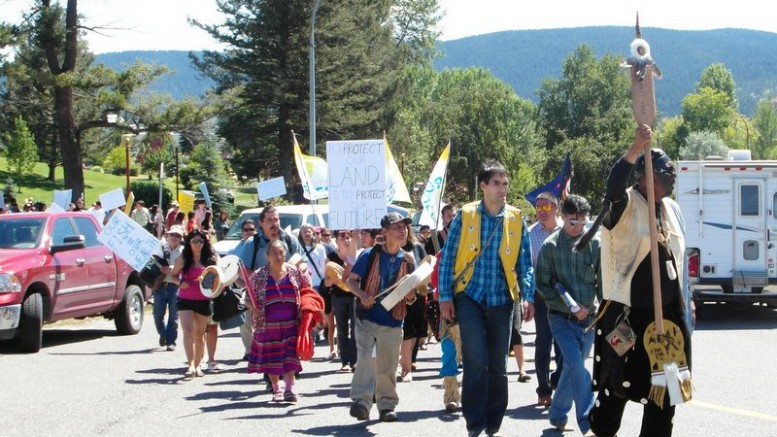I visited Taseko Mines’ Gibraltar mine north of Williams Lake, B.C., in 2008. The company bought the shuttered operation in 1998 and restarted it in 2004. Four expansions later, Gibraltar now employs 700 people, churns out 90 million lb. copper annually and is a major regional economic driver. It’s been a great story for a part of the province that has struggled with mill closures and unemployment.
During that Gibraltar tour, talk kept veering towards the Prosperity project, 175 km south. I remember Taseko president and CEO Russell Hallbauer downplaying the challenges of permitting the new mine. He figured Taseko had earned respect from the locals through Gibraltar and that, combined with a dire need for new economic activity locally, would mean enough support to dial down any voices of discontent.
What Hallbauer could not have predicted was that Prosperity, which happens to sit on lands involved in Canada’s most significant aboriginal land claims court case, would become a rallying cry for almost every anti-mining voice in the province.
Prosperity is a copper-molybdenum porphyry that Taseko wants to open pit mine. There’s a lake beside the deposit — known as Fish Lake, or Teztan Biny — that is one of 13,000 lakes in the Caribou region in the 100- to 150-hectare size range. Taseko planned to drain Fish Lake because it was too close to the proposed pit.
Back in 2008, the Prosperity review process was just getting started. So too were its opponents, empowered by a B.C. Supreme Court decision that found the Tsilhqot’in First Nation has a right to hunt and trap fish and birds throughout a 4,381 sq. km area that includes the Prosperity project. Justice David Vickers said he could not declare aboriginal title to the entire area as the Tsilhqot’in wanted, but he came close, saying he would have found for their title to part of the land package if that option had been presented. (Prosperity is outside of that smaller area.)
This case is the first time a court has granted rights over a parcel of land to a particular First Nation. The B.C. Court of Appeal upheld the landmark decision. It is now before the Supreme Court of Canada. That court will grapple with the central issue around indigenous rights in Canada: What land rights do First Nations hold today over the lands they controlled before the Crown asserted sovereignty?
While that question is considered, Taseko wants to build a mine on the very lands the Tsilhqot’in believe they own.
It means even the foundation of the Prosperity debate — whose land is it anyway? — is incredibly fraught. Add in a lake called Fish Lake and a whack of advocacy groups using a First Nations fight to assert land claims and stop an open-pit mine to advance their own agendas, and you have today’s Prosperity melee.
And the melee has just started anew. The B.C. government approved Taseko’s original Prosperity proposal, but the federal government turned the company down, saying that the adverse effects of draining Fish Lake were more significant than the mine’s benefits. However, the feds said they would consider a new plan that mitigated those impacts.
So a new plan Taseko has created. Dubbed New Prosperity, the mine plan now includes a $300-million pit adaptation that preserves Fish Lake.
Even though the plan resolves that primary issue, Taseko’s opponents are not backing down. The First Nations of the Caribou are utterly opposed to New Prosperity, and a long list of advocacy groups are fuelling the fight, often with information so skewed and incorrect it is astounding.
Also astounding is the fact that Taseko is still fighting. It has to win so many battles for New Prosperity to even happen, including one wherein the company has no say: the Supreme Court deciding whether or not the Tsilhqot’in own the land around Prosperity.
In the city of Williams Lake at the protestors’ pre-public-hearing rally I attended on July 22, the hatred for Taseko was palpable. Claims contrary to the scientific evidence flew wild and free. There was no effort or intent to differentiate between the fight over New Prosperity’s environmental impacts and the underlying issue of aboriginal land title. This grouping of activists wants to fight for their environmental, native and human rights, and New Prosperity is today’s target.
Perhaps that’s one reason Taseko went back for round two — because in the name of mineral explorers and developers across the country, someone has to fight back.



Be the first to comment on "Editorial: Prosperity’s temerity"